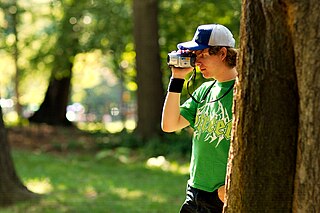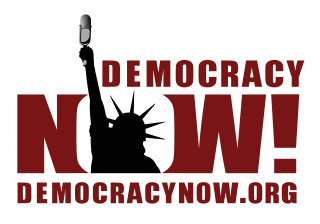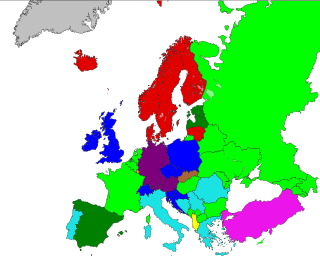WYOU Community Television, Inc (WYOU) is a nonprofit Public, educational, and government access (PEG) cable television station for the Madison, Wisconsin area. WYOU operates on 100% volunteer support that is independent of governmental, commercial, academic, and religious entities.
Public, educational, and government access television refers to three different cable television narrowcasting and specialty channels. Public-access television was created in the United States between 1969 and 1971 by the Federal Communications Commission (FCC) and has since been mandated under the Cable Communications Act of 1984, which is codified under 47 USC § 531. PEG channels consist of:
- Public-access television – Generally quite free of editorial control, a form of non-commercial mass media where ordinary people can create television programming content which is transmitted through cable TV The channels are reserved free or at a minimal cost. The local origination television content revolves primarily around community interest, developed by individuals and nonprofit organizations.
- Educational-access television – Is distance education, a curated form of educational television, it is a synchronous learning educational technology unique to cable television systems and transmit instructional television, on Time Warner Cable channel 21, programming within city limits. Educational-access channels are generally reserved for educational purposes and are not for government-access or public-access television. Many schools have adapted educational access channels to enhance school curriculum. Some schools have done this better than others. Although the use of television in schools can be traced to those schools serving the bedroom communities of Manhattan in the 1960s, where executives and technicians of early television lived, the creation of PEG channels expanded the value of television as a school or community resource. Students produced and aired community stories in part to serve community stakeholders and in part to engage in active learning. These schools developed school-based community television as a storytelling laboratory.
- Government-access television – Cable channel capacity for the local government bodies and other legislative entities to access the cable systems to televise public affairs and other civic meetings. Government channels are generally reserved for government purposes and not for education-access or public-access television.
- Leased access – Cable television channels that are similar to commercial television where a fee is paid-for-services of reserved channel time.
- Municipal-access television – or "Community Access television" are ambiguous terms that usually refer to a channel space assigned on a Cable TV System intended to provide the content to all or some of the above listed access channels, and may contain other "access" programming such as "religious access" or the TV programming of a local institution, such as a college or a library. These channels are usually created as cost saving measures for the Cable TV company if their franchises or governing authorities allow it.
- Hybrid – Often, one channel will take on the role of another channel type on a regular basis. An example of this would be a college with a strong television production curriculum assumes the roles of educational access and public access. Beyond the typical curated educational access programming, a public access television element would be added where public access television producers would make shows using college owned equipment and college students as crew. This can be very beneficial to both entities, as the students earn credits for the work while contributing to the public access channel. However, difficulties can arise when the programming made for public access is of a type that does not reflect the values or tastes of the supporting college, and in such situations, colleges often make the decision to downplay or abandon the public access element of the channel, depending on how much funding is earned by assuming the public access television duties.

Cable television is a system of delivering television programming to consumers via radio frequency (RF) signals transmitted through coaxial cables, or in more recent systems, light pulses through fiber-optic cables. This contrasts with broadcast television, in which the television signal is transmitted over the air by radio waves and received by a television antenna attached to the television; or satellite television, in which the television signal is transmitted by a communications satellite orbiting the Earth and received by a satellite dish on the roof. FM radio programming, high-speed Internet, telephone services, and similar non-television services may also be provided through these cables. Analog television was standard in the 20th century, but since the 2000s, cable systems have been upgraded to digital cable operation.

Madison is the capital of the U.S. state of Wisconsin and the seat of Dane County. As of July 1, 2017, Madison's estimated population of 255,214 made it the second-largest city in Wisconsin by population, after Milwaukee, and the 82nd-largest in the United States. The city forms the core of the Madison Metropolitan Area which includes Dane County and neighboring Iowa, Green, and Columbia counties for a population of 654,230.
Contents
As of January 1, 2011 Wisconsin eliminated PEG access funding. [1] WYOU now relies entirely on membership and videography & editing class fees, video services, and donations for funding. [2]

Videography refers to the process of capturing moving images on electronic media and even streaming media. The term includes methods of video production and post-production. It could be considered the video equivalent of cinematography. The advent of digital video recording in the late 20th century blurred the distinction between videography and cinematography, as in both methods the intermittent mechanism became the same. Nowadays, any video work outside commercial motion picture production could be called videography.
The broadcast schedule consists almost exclusively of locally produced programming, including the interview and performance show "Mindshock," broadcasts of events from the Madison Civics Club, and recorded performances by such acts as the Capital City Band, Jesse Walker, and the Gomers and their "Gomeroke" karaoke concerts. WYOU also airs satellite-fed programs such as Democracy Now! and other programs from Free Speech TV.

Democracy Now! is an hour-long American TV, radio and internet news program hosted by journalists Amy Goodman, who also acts as the show's executive producer, and Juan González. The show, which airs live each weekday at 08:00 ET, is broadcast on the internet and by over 1,400 radio and television stations worldwide.

Free Speech TV (FSTV) is an American news and opinion network. It was launched in 1995 and is owned and operated by Public Communicators Incorporated, a 501(c)3 non-profit, tax-exempt organization founded in 1974. Distributed principally by Dish Network, DirecTV, and the network's live stream at freespeech.org and on Roku, Free Speech TV has run commercial free since 1995 with support from viewers and foundations. The network claims to "amplify underrepresented voices and those working on the front lines of social, economic and environmental justice," bringing viewers an array of daily news programs, independent documentaries and special events coverage, predominantly from a progressive and pro-socialism perspective.
WYOU currently airs on analog Channel 95 and Digital 991 on Charter Cable's systems in Dane County. Alternatively, a free streaming broadcast can be viewed on their website. [3]
Charter Communications, Inc. is an American telecommunications and mass media company that offers its services to consumers and businesses under the branding of Spectrum. Providing services to over 26 million customers in 41 states, it is the second-largest cable operator in the United States by subscribers, just behind Comcast, and third largest pay TV operator behind Comcast and AT&T. It is the fifth largest telephone provider based upon residential subscriber line count.






